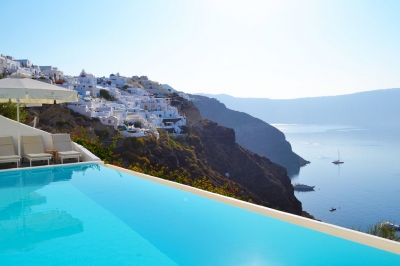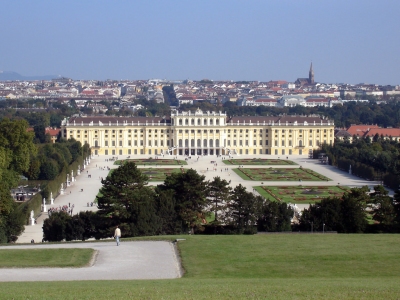![(Sergei Gussev) [flickr.com] CC BY
License Information available under 'Proof of Image Sources' (Sergei Gussev) [flickr.com] CC BY
License Information available under 'Proof of Image Sources'](/wp-content/uploads/reiseziele/87548.jpg)
The capital of Portugal is a fascinating metropolis. At every corner, visitors can feel the splendour of bygone eras, when the proud seafaring nation explored and colonized countries still far away. This historical position in Europe helped many Portuguese people to wealth and the nation to a diverse cultural heritage. Originating from Phoenician and Moorish roots, Lisbon experienced a significant boom at the beginning of the 16th century, especially as a trading hub.
Located in the southwest of Europe, it was above all the favourable location of the port, directly in front of the Atlantic coast of the Iberian peninsula, which was of great importance for the fate of the city. Today Lisbon is also a young, modern capital, full of attractiveness and vibrant urban lifestyle.
Below we present you the most exciting tours, the most beautiful attractions and the best sights in Lisbon.
1. Torre de Belém
One of Lisbon’s most famous landmarks is located directly at the mouth of the river Tejo and was already built in 1515. The Torre de BelĂ©m, a tower about 35 meters high that today houses a viewing platform and one of the few buildings in the Portuguese capital that survived the great earthquake of 1755. In its original meaning, the building served as a lighthouse and a magnificent welcome monument to the sea and trade power.
A twin tower once stood on the opposite bank, but was completely destroyed by the great quake. Decorated with numerous illustrations, battlements, balconies and lookouts according to Moorish specifications, the Torre is one of the few remaining original buildings from the period of the Manueline epoch of the early 16th century and has been a UNESCO World Heritage Site since 1983.
2. Monastery Mosteiro dos JerĂłnimos
Also in the Belém district is the most important building in Portuguese architectural history. The monastery of the Mosteiro dos Jerónimos, for a long time the home of the Roman Catholic community of the Jeronimites, who also gave the name to the magnificent building. Financed by the wealth of commercial income, Manuel the First already commissioned the masterly construction in 1501, the completion of which lasted a hundred years and to which structural extensions were subsequently added.
The imposing building complex with church, choir, cloister courtyard and park uses the classic Portuguese variant of the late Gothic as well as numerous Renaissance influences. The approximately 300-meter-long building is also a UNESCO World Heritage Site and is the final resting place of many Portuguese kings and famous personalities. It is one of the most important sights in Lisbon.
3. Fortress Castelo de SĂŁo Jorge
A popular excursion destination and another tourist attraction in Lisbon is the fortress Castelo de SĂŁo Jorge. Originally built as a hilltop castle by the Moors, it later served the kings as a retreat and residence for centuries. On the high plateau of the complex, which spreads over a large area, there are several towers and guard posts next to a castle ruin.
The site is an archaeological excavation site with finds from Phoenician, Moorish and Roman times. In one of the towers integrated into the fortress, the Torro de Tombo, the collection of documents of the kings was kept in former times. From the plateau of the Castelo de SĂŁo Jorge the visitor has a fantastic view over the whole of Lisbon and the bay.
4. Bullring Praça de Touros do Campo Pequeno
The impressive rotunda of the new Lisbon Bullring was completed in 1892 and was based on a model from the Spanish capital Madrid. The imposing red stone building, with four large tower portals and numerous windows, offers space for around 10,000 spectators today. After a thorough renovation and numerous restructuring measures at the beginning of the new millennium, the arena is now more than just a venue for the traditional bullfight.
In front of the main portal area is the entrance to an underground shopping centre and the underground. The conventional arena was given a closed roof construction and now also serves as a multifunctional destination for concerts, exhibitions and other events.
5. Park of Nations with Oceanário de Lisboa
The site of the former World Exposition, EXPO 1998, with the Park of Nations, testifies to a modern, innovative Lisbon. Here, directly on the banks of the Tejo, is also the Ozeanium. Europe’s largest indoor aquarium was already the main attraction at the EXPO and still fascinates thousands of visitors today.
A regionally subdivided, fascinating underwater world with a wide variety of inhabitants and a new extension with changing theme exhibitions convey a lot of interesting knowledge. The surrounding, former exhibition area is today a young new district with plenty of space for cultural and sporting activities.6. Gourmet tour in the Mercado da Ribeira
Opposite the Cais do SodrĂ© station, on the 24th of July street, is the traditional Mercado da Ribeira. Anyone who wants to experience the originality, the attitude towards life and a culinary journey through the treasures of Portuguese cuisine is in good hands here. Since 1882, the historic hall with its domed roof and iron elements has been a transshipment point for regional treasures such as fish, vegetables, ham and sheep’s cheese.
After a conversion and renovation at the turn of the millennium, the market hall is now also a popular meeting place for young and old as well as an important tourist attraction. Numerous stands, restaurants and bars offer traditional food and drinks as well as fresh, young cuisine. A land of milk and honey of culinary delights, which also serves as an arts and crafts market or event location on one or the other weekend.
7. LX Factory Lisbon
For some years now, a hidden urban fragment has been created on a large former industrial site with factories for fabrics and yarns, which now returns its developed culture and scenery to the heart of the metropolis. The resurrection of the formerly dreary workers’ quarter Alcântara is no longer an insider tip, but a side trip is definitely worthwhile.
The alternative, creative island now attracts with hundreds of shops. Designer model shops, restaurants, bars, market stalls and galleries enliven the scenery. Cabaret and several events dominate the former factory halls. A colourful hustle and bustle which is also reflected in the walls of the buildings and which has experienced its very own dynamic of creativity. A newly invented place in the middle of the big city. All of them, all of them.
8. Alfama and the Arab Roots
Alfama is the oldest district of the Portuguese capital. It lies between the Castelo de SĂŁo Jorge and the banks of the Tejo. The network of small houses and the labyrinth of narrow alleys look like from another time. Under the aegis of the Moors, the quarter formed the core of Lisbon before expanding further westwards over the years.
In addition to exploring the Arabic roots, it is worth taking a ride on tram 28 and visiting one of the many fadolocals. The quarter also houses the oldest church in the city, the Catedral SĂ© Patriarcal, whose construction began in 1147.
9. Heartbeat of Baixa and Praça do Comércio
Lisbon’s pulse beats in the centre, the Baixa Pombalina. The city centre, rebuilt after the great earthquake of 1755, is the tourist heart of Lisbon. The many medieval lanes and tiled facades are surrounded by large squares and magnificent buildings.
One of these important squares is the Praça do Comércio, where the impressive archway, the Arco da Rua Augusta, is the entrance to the city centre. An ensemble of historical buildings, squares and statues combines the multifaceted elements to form a monumental overall picture. Numerous museums, churches, promenades and cultural institutions round off this presentation.
10. Lisbon Zoological Garden
Especially for families with children, a visit to the zoo is almost always worthwhile. The Jardim ZoolĂłgico de Lisboa opened its doors in 1884 and was the first of its kind in the Iberian Peninsula. With the lake and the dolphin bay, redesigned in the 1950s, and a diversity of over three hundred species, the zoo has many attractive elements.
A cable car, numerous events, a children’s paradise and extra programmes enrich the offer and make the Zoological Garden one of the most visited sights in Lisbon. The extensive area is located between the University of Lisbon and the Benfica football stadium.
More things to do and activities for your Lisbon holiday
Best time to visit Lisbon
We recommend the following months as best time to travel for exploring the attractions and acivities of Lisbon:
May, June, July, August, September, and October
You can find more information about the weather, including all climate data, on our climate page for Lisbon.

![(Sergei Gussev) [flickr.com] CC BY
License Information available under 'Proof of Image Sources'](/wp-content/uploads/reiseziele/3503_preview.jpg)
![Uphill Lisboa (Yellow Tram) (Ann Wuyts) [flickr.com] CC BY
License Information available under 'Proof of Image Sources'](/wp-content/uploads/reiseziele/uphill-lisboa-yellow-tram26374_preview.jpg)
![Lisboa - Cristo Rei (Harshil Shah) [flickr.com] CC BY-ND
License Information available under 'Proof of Image Sources'](/wp-content/uploads/reiseziele/lisboa---cristo-rei85913_preview.jpg)




